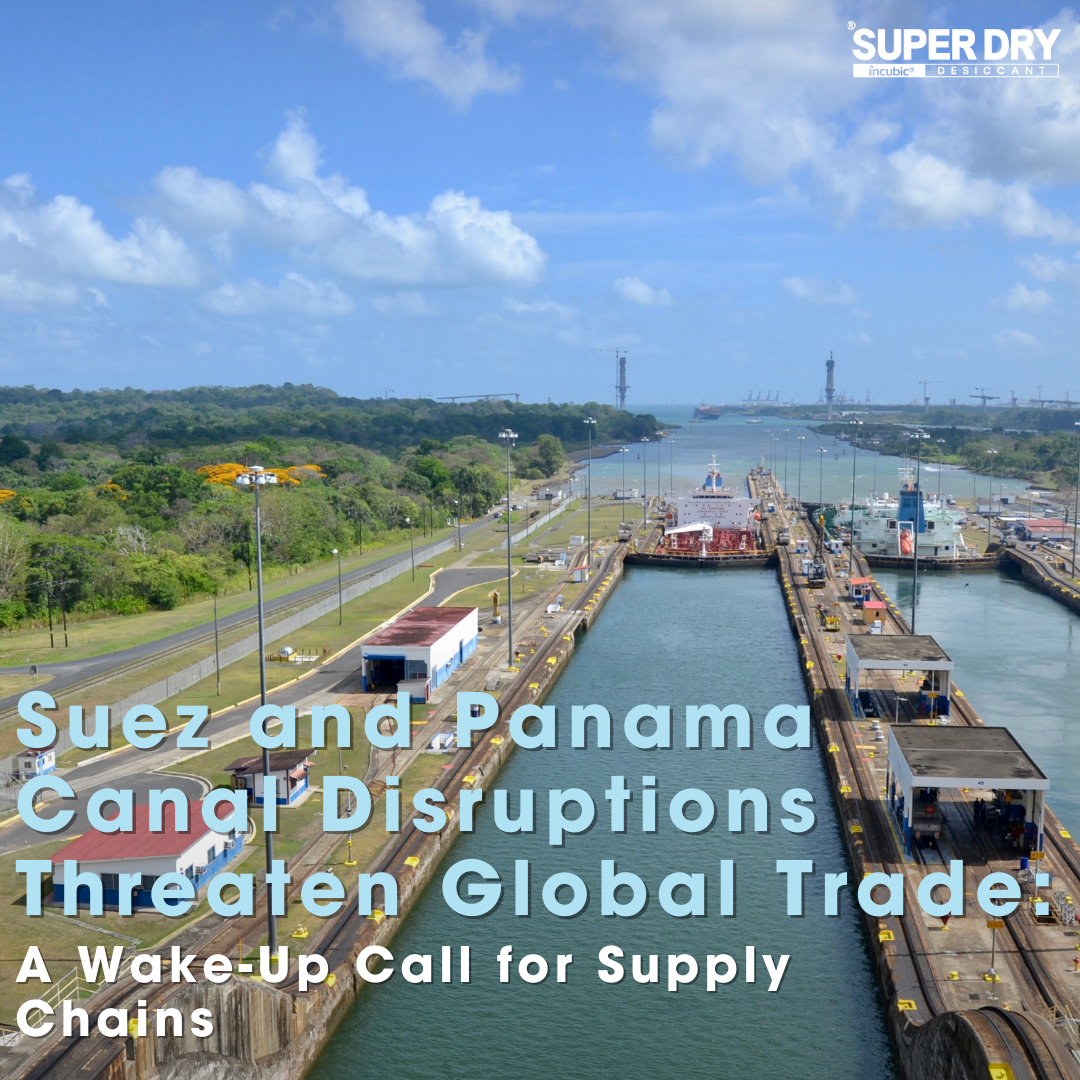Suez and Panama Canal Disruptions Threaten Global Trade: A Wake-Up Call for Supply Chains

Global trade is facing serious disruptions as the Suez Canal and Panama Canal, two of the most important shipping routes in the world, are experiencing major challenges. These disruptions are being caused by a combination of geopolitical tensions and climate-related risks, according to a recent report by the United Nations Conference on Trade and Development (UNCTAD). The effects of these challenges are wide-ranging, impacting global supply chains, increasing costs, and altering trade patterns.
The Impact on Global Trade
The disruptions in the Suez and Panama Canals are having a ripple effect on global trade, affecting the flow of goods and increasing operational costs for companies. The number of ships passing through the Suez Canal has dropped dramatically. By mid-October 2024, traffic was down by 57% compared to its previous peak. This has strained the movement of goods, forcing companies to find alternative routes.
In comparison, the Panama Canal is showing signs of recovery. Traffic levels are still 30% lower than the canal’s peak, but have improved by 40% since earlier in 2024. Still, rerouting vessel traffic around Africa’s Cape of Good Hope has increased by 89%, which has led to longer delivery times and higher costs for businesses. Shipping around the Cape instead of using the Suez Canal can add up to $400,000 in additional costs for large container ships due to emissions under the European Union’s Emissions Trading System (ETS).
The Domino Effect
Longer shipping routes are driving up costs in several ways. Increased fuel consumption, crew wages, and insurance premiums are just a few of the added expenses. Moreover, rerouting vessels leads to more congestion in key port hubs, such as Singapore and major Mediterranean ports, which further delays shipments and drives up costs.
Longer shipping routes aren’t just increasing costs in fuel consumption, crew wages, and insurance premiums. They are also putting the integrity of goods at greater risk, particularly when it comes to moisture damage. Rerouted vessels spend more time at sea, which exposes shipments to fluctuating temperatures and humidity levels, especially as they cross different climate zones. These extended transit times can increase the likelihood of condensation buildup inside containers, leading to mold, corrosion, and overall product degradation.
Vulnerable Economies Hit Hardest
The disruptions at the Suez and Panama Canals are having the most severe impact on small island developing States (SIDS) and least developed countries (LDCs). These nations rely heavily on maritime shipping to import essential goods, including food and energy. As shipping becomes more expensive and less reliable, these vulnerable economies are facing rising prices and economic instability.
If these trends continue, global consumer prices could rise by 0.6% by the end of 2025. For SIDS, prices could increase by as much as 0.9%, and processed food costs may rise by 1.3%. These price hikes will put additional pressure on already struggling economies, especially those with limited access to global shipping networks.
The Need for Action
UNCTAD’s Review of Maritime Transport 2024 stresses the urgent need for coordinated global action to protect vital shipping routes. To reduce the impact of these disruptions, the organization recommends:
• Strengthening international cooperation to ensure shipping routes function properly, even in times of crisis.
• Investing in resilient infrastructure to minimize the effects of climate change and geopolitical conflicts on maritime chokepoints.
• Diversifying shipping routes to reduce dependence on long-distance corridors like the Suez and Panama Canals.
As over 80% of global trade is carried by sea, safeguarding these routes is essential to maintaining the flow of goods and ensuring economic stability worldwide.
Protecting Shipments with Super Dry Desiccants
While global shipping faces increasing challenges, businesses can still protect their goods from one of the most common risks: moisture damage. Longer shipping routes and delays increase the likelihood of moisture exposure, which can lead to damaged goods and costly losses. This is where Super Dry Desiccant solutions come into play.
Contact us today for a free consultation to learn how Super Dry can help protect your shipments and ensure the smooth flow of your supply chain.
